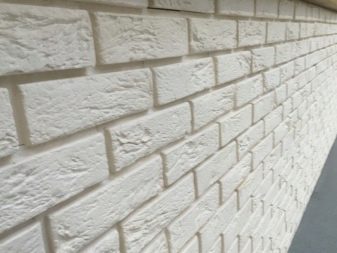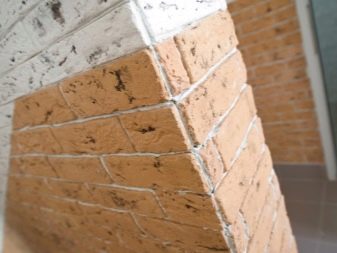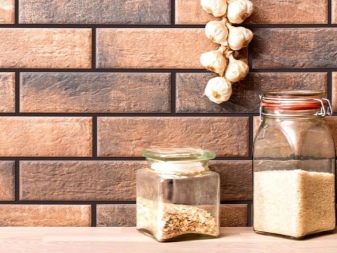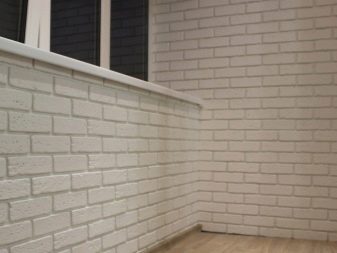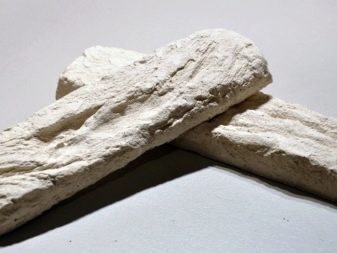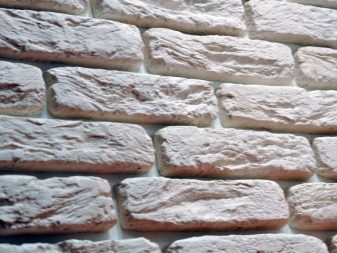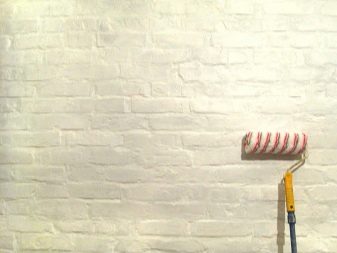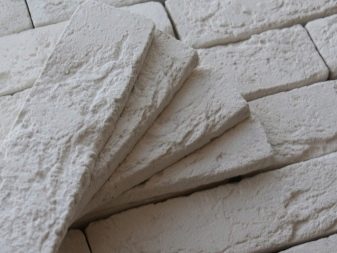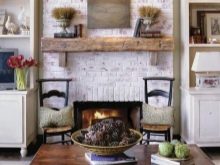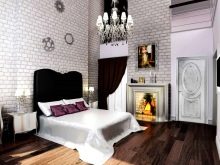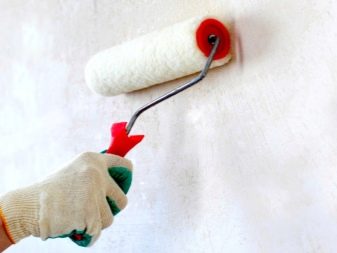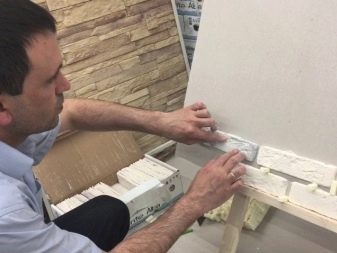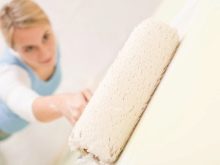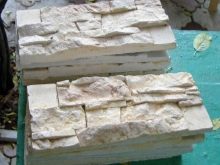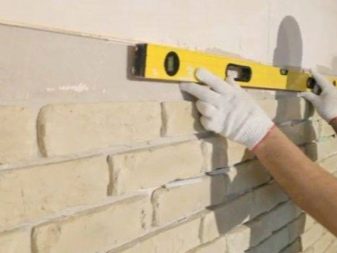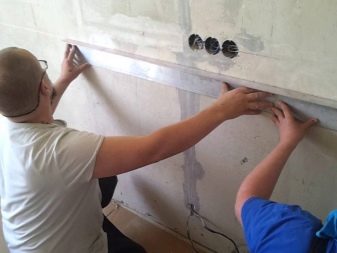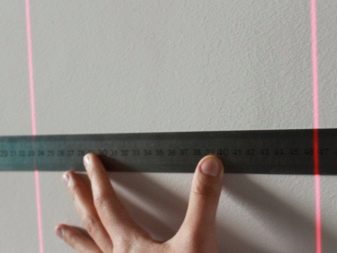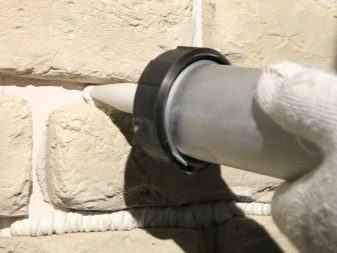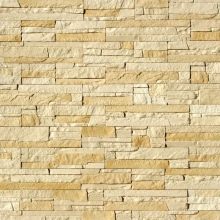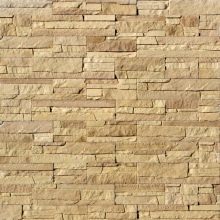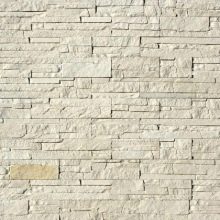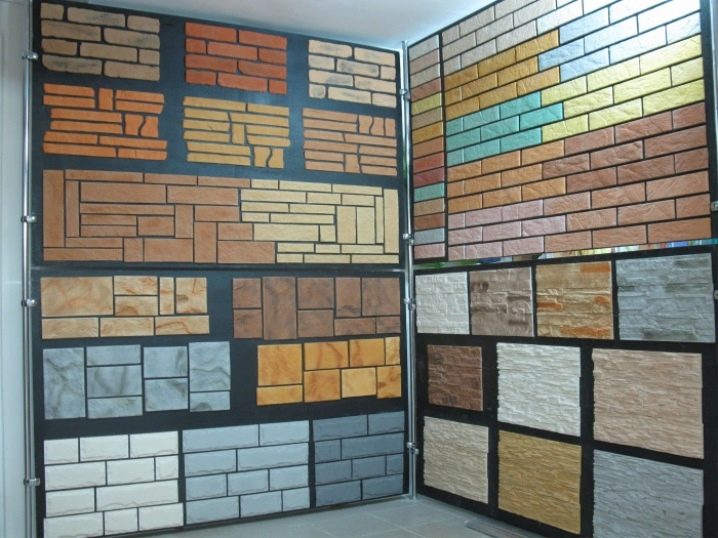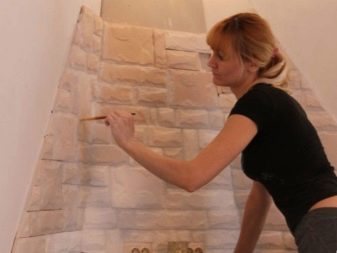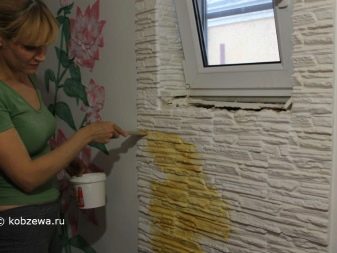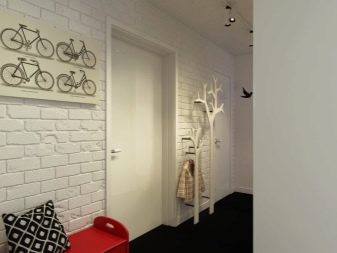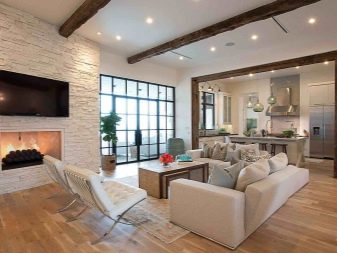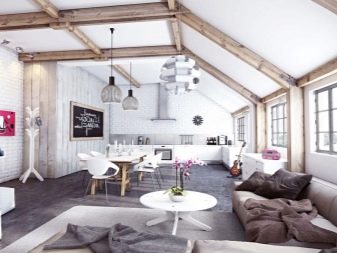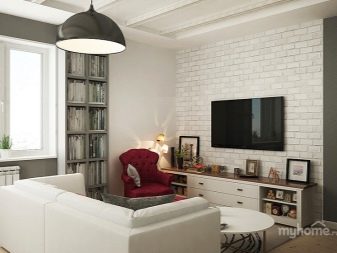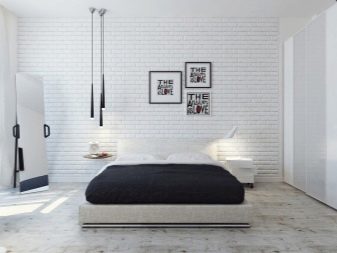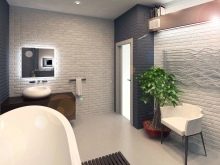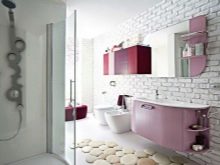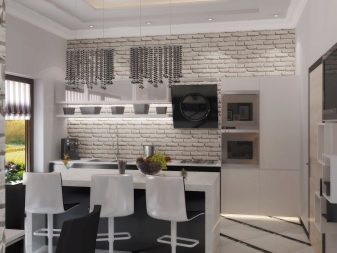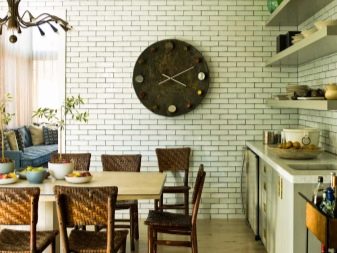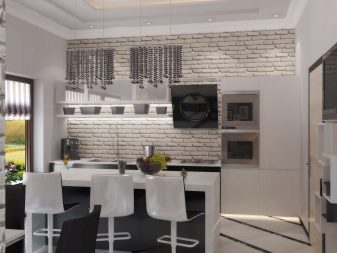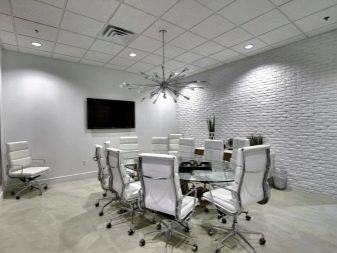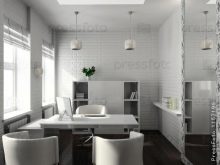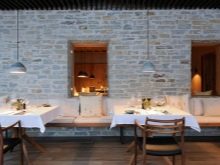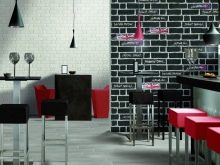Brick plaster tiles: the advantages and options of design
Gone are the days when the unfavorable brickwork of reddish-orange color was plastered and hidden behind wallpaper or sewn with plastic. Brick rightfully took its place in the interior design of hallways and bathrooms, residential and office space. Rooms, designed in this way, have an element of romance and charm, while being the object of an ultra-modern style.
Special features
Not any apartment can accommodate an additional brick row - buildings are nowadays made of metal and concrete, wooden and frame structures have become the norm. Not every construction will withstand heavy brickwork. But to abandon such a spectacular design options are not worth it. An alternative can be a gypsum tile, decorated under a brick.
She, like any other material, has certain pros and cons, the knowledge of which will help to make the right choice.
Advantages:
- Security. Gypsum - a material of natural origin, respectively, products based on it are environmentally friendly.
- Durability. Compared to many other finishes, it has greater strength, retaining its entire life cycle. Often used in places most prone to abrasion and mechanical stress.
- Thermal insulation. Due to its low thermal conductivity, it retains heat indoors, preventing cold from entering outside. A wall pasted over with such material will never freeze through.
- Noise isolation. The density of the material is high, the sound permeability is low, respectively, the penetration of noise is minimized.
- Fire resistance It maintains the burning temperature of a direct flame, can be used for direct lining of stoves and fireplaces. When heated, it does not emit any hazardous substances.
- Maintaining a comfortable indoor climate. Absorbs excess moisture from the air, gives it away with excessive dryness, levels the temperature of the surrounding space.
- The ability to create a realistic texture, place accents, emphasize the dynamics of the interior.
- Weight. Gluing can be carried out on any wall without reinforcement with the help of almost any glue, does not bear the global load on the floor.
- Ease of installation and processing. You can start work without any experience.
- No need to purchase additional equipment or special materials.
- Cost Value for money is perfect. The price of the material is low, moreover, there is the possibility of its independent production.
Disadvantages:
- It is more adapted for internal, than external works.
- Excessive hygroscopicity is a contraindication to the placement of the material in the outdoor decoration, however, today started the production of gypsum-cement plates, it is quite suitable for finishing the exterior.
- Increased fragility. This figure can be reduced by adding special substances at the stage of manufacturing and processing the surface after installation.
- Difficulties in the care. Unprocessed plaster surface is able to accumulate dust.
- When a tile is placed in a room exposed to high humidity, it is necessary to process it with additional protective and water-repellent solutions.
Colors
Natural color of gypsum white. Initially, the finished product color is the same. But in the manufacturing process there is the possibility of adding coloring pigments of any hue to the mixture. The finished product will be uniformly colored and resistant to fading. When chipping and cutting, the cut of the bricks inside will have the same color as the outside.
Also paint the plaster tile is obtained in the process of processing its composition of fragility. They contain vitriol, which is a dye. Copper sulfate gives a bluish tint, and iron - yellowish.
You can also paint it yourself in any color, increasing the possibility of tile adaptability to any interior.
How to choose?
For outdoor decoration this option will be unacceptable. A similar material was invented for the exterior decor - gypsum-cement tile, visually indistinguishable from gypsum tile. Therefore, having set out to improve the exterior of the home,bother to find out about the composition of finishing materials in more detail.
Materials that imitate the bricks for interior decoration of the premises are increasingly used. The laying is perfectly combined with many styles, and in connection with a variety of colors and invoices there is an acute question of a choice of concrete finishing material.
If your room is made in the style of a loft, then a large space should be occupied by a brick, at least one wall. The color should be closest to the color of natural brick - all sorts of shades of the ocher-red spectrum. The size of the bricks is selected in the size of approximately 6 to 12 centimeters.
The combination of brick and wood will accentuate the romance of country life in the best way possible. A brick wall could be painted to imitate lime on top of textured bricks.
The brick is perfectly combined with the Gothic style - wrought iron elements and massive furniture, windows with stained glass windows and a fireplace. Decorative plaster and crystal chandeliers will also harmoniously fit into this interior.
Minimalism is characterized by large areas of masonry and a minimum of details. Bright color accents are welcome.
Decorative texture, resembling a brick, is a worthy alternative to textured wallpaper with the "effect of bricks", decorative plaster, drywall, real bricks, their facing options.
There is the possibility of making tiles with his own hands. The plaster mix, silicone mold, flat surface, color schemes, matte acrylic lacquer, brushes and spatula will be necessary for this. If you follow all the recommendations for the manufacture of the product, there will never be any problems with choosing the fragment of the laying you are interested in.
How to lay?
The tile from plaster is rather unpretentious. Metal, wooden, concrete surfaces, as well as old brickwork are suitable for its installation.
Working with concrete or brick, you should not forget about the porosity of the texture. If the need arose, they should be treated with a special primer mixture.
If you have to arrange a less solid object, decorated with gypsum plasterboard, OSB-slab or plywood board, you need to make sure that these surfaces are able to maintain their shape. Fixing plasterboard to plasterboard should begin after checking it for dryness.
Working with a tree means fixing fiberglass on it, which is necessarily plastered. There are two methods of fastening plaster tiles: dry (fasteners are used) and wet.
Regardless of the method chosen, there is a set of preparatory activities that are fundamental:
- Surface alignment.
- Purification of excess substances or dirt using a soap solution, after which the surface will need to be thoroughly dried.
- Now you can directly deal with the facing bricks - they should be sorted out, excluded defective or beaten copies, spread out for ease of attachment.
Dry method of laying:
- Make sure that the fixing elements have side slots for fixings.
- Marking the wall. A distance equal to the length of one tile is deposited from any corner of the wall or furniture. Vertically mounted guide.
- In the resulting "tunnel" is picking up tiles from top to bottom.
- Fastening decor occurs with special bolts.
- Repeated delaying the length of this element in the neighborhood.
Wet mode:
- Determine which method will be placed bricks - at the joint or seam joints.
- Marking the rows directly on the treated area and pre-laying the tiles before fixing them on the wall. We must not forget about the thickness of the future seam, if it was decided to provide for it.
- Prepare a small portion of the glue, remembering that it begins to set in thirty minutes.
- Work should be done in the direction from bottom to top, starting from the bottom corner.
- The adhesive composition is applied directly to the tile or to the working area with a thickness of not more than 2 mm.
- Gypsum blank is pressed into the wall with a twisting motion very carefully.
Is it possible to paint?
Gypsum tile with the effect of the natural surface of stone or brick is sold in stores everywhere. The factory method of staining, the most common - staining in bulk. To do this, tinting pigments are added directly in the process of mixing the plaster mass. This method is most effective, since when chipped products will have a natural color of the texture, not only outside but also inside.
From the huge number of colors and shades dazzles in the eyes,but upon closer examination, all the flaws in industrial painting become visible - the tinting is often far from natural and cuts the eye with strange color accents.
Coloring the finished product seems to be not difficult, but the success of the entire design project depends on visual perception. If you set out to bring an element of vitality into the factory paint and do it for the first time, then it is worth processing each detail separately before attaching it to the wall. Subsequently, upon receipt of the initial experience, you can proceed to the mass coloring of the plaster web already attached to the object.
There are several simple and time-tested painting methods:
- To a half teaspoon of paint, add a glass of water and an acrylic primer. Accent spots are applied directly to the bottom of the mold before pouring the solution. This method requires high-quality drying, after which the workpiece is covered with a matte water-based varnish.
- The tinting paste is added to the water and applied to the untreated gypsum surface with a brush, airbrush or a simple household spray.Due to its hygroscopic properties, the plaster absorbs the paint and after drying it will take on quite a lively look. It is possible to replace in solution up to half of the water with an acrylic primer, from which the dried tile will acquire additional strength.
If, after tinting, an excessively pale color is acquired, it can be restored to a natural color by applying a matt or silky matt varnish. This will give the product additional strength.
Examples in the interior
Designers of the whole world are delighted with the accustomed tendency to introduce such an element of decoration as a brick wall into the interior of residential apartments, office premises and public institutions. She can be used both in the brutal fireplace room and in the romantic bedroom.
The brick wall can be a great alternative to wallpaper, panels and plaster, because it looks more intriguing. The cost of a material that imitates a real brick is minimal, and the possibilities are almost endless:
- The entrance hall. Most often, in conditions of limited space in the hallway under the brick, it is customary to decorate only one wall. The light tone of the bricks will not hide space.Another option is to lay out the frame for the mirror, arch, place for clothes.
- Living room. A brick wall will be the perfect background for creating a video zone. Also, it is the best fit for creating a contrasting interior: a dark shade of masonry - light furnishings, and vice versa. Even if the accent brick wall is painted in the same color shades as the rest of the space, it will attract everyone’s attention with its texture. If the interior of the hall is supplemented not only with a brick wall, but also with massive wooden ceiling beams and columns, you can fill the interior with wrought iron objects and crystal chandeliers or sconces, then you can bring the spirit of a medieval castle into a modern home.
If there is a fireplace in such a space, it is possible to decorate not only its firebox and facade with gypsum bricks, but also the space near and above it.
- Bedroom. The calmness of the bed in no way will disturb the brick wall behind the head of the bed, and it will look stunning.
- Children's In the children's room brick can be used as zoning.
- Bathroom. In combination with white plumbing brick texture gives an interesting contrast.
- Kitchen and dining room.
- Laying as a kitchen apron.
- Zoning dining area.
- Contrast with monotonous kitchen planes and facades.
- Office and office
- Cafe
How to make an imitation of a brick wall of plaster tiles, see below.

